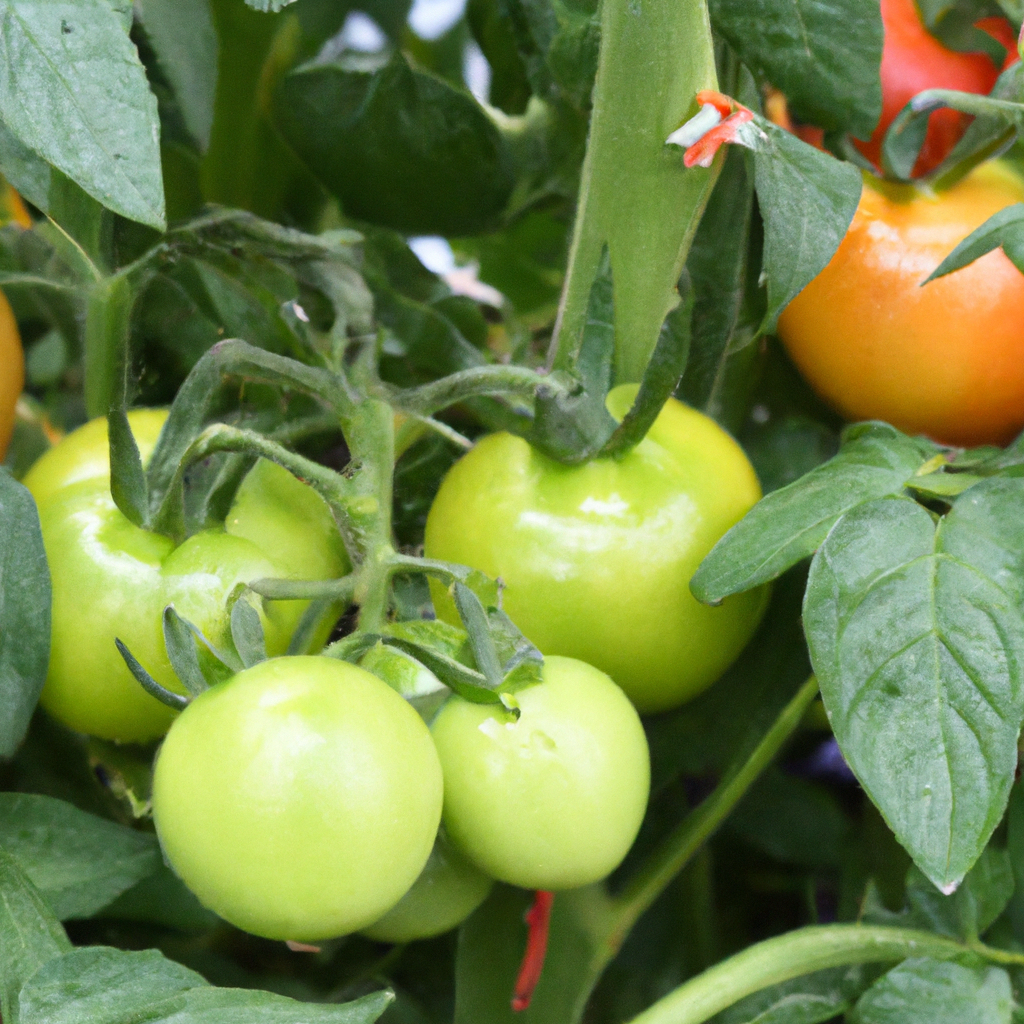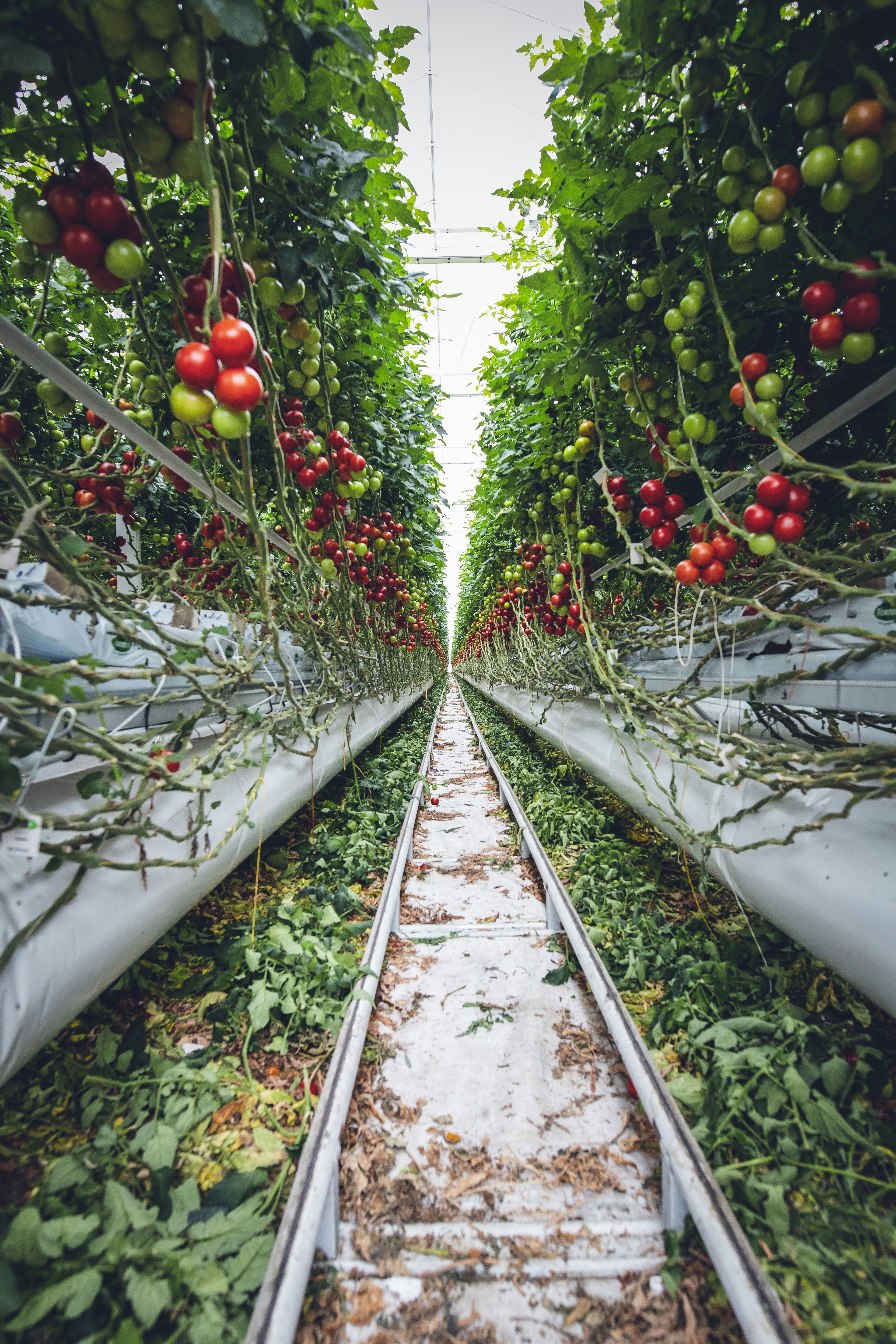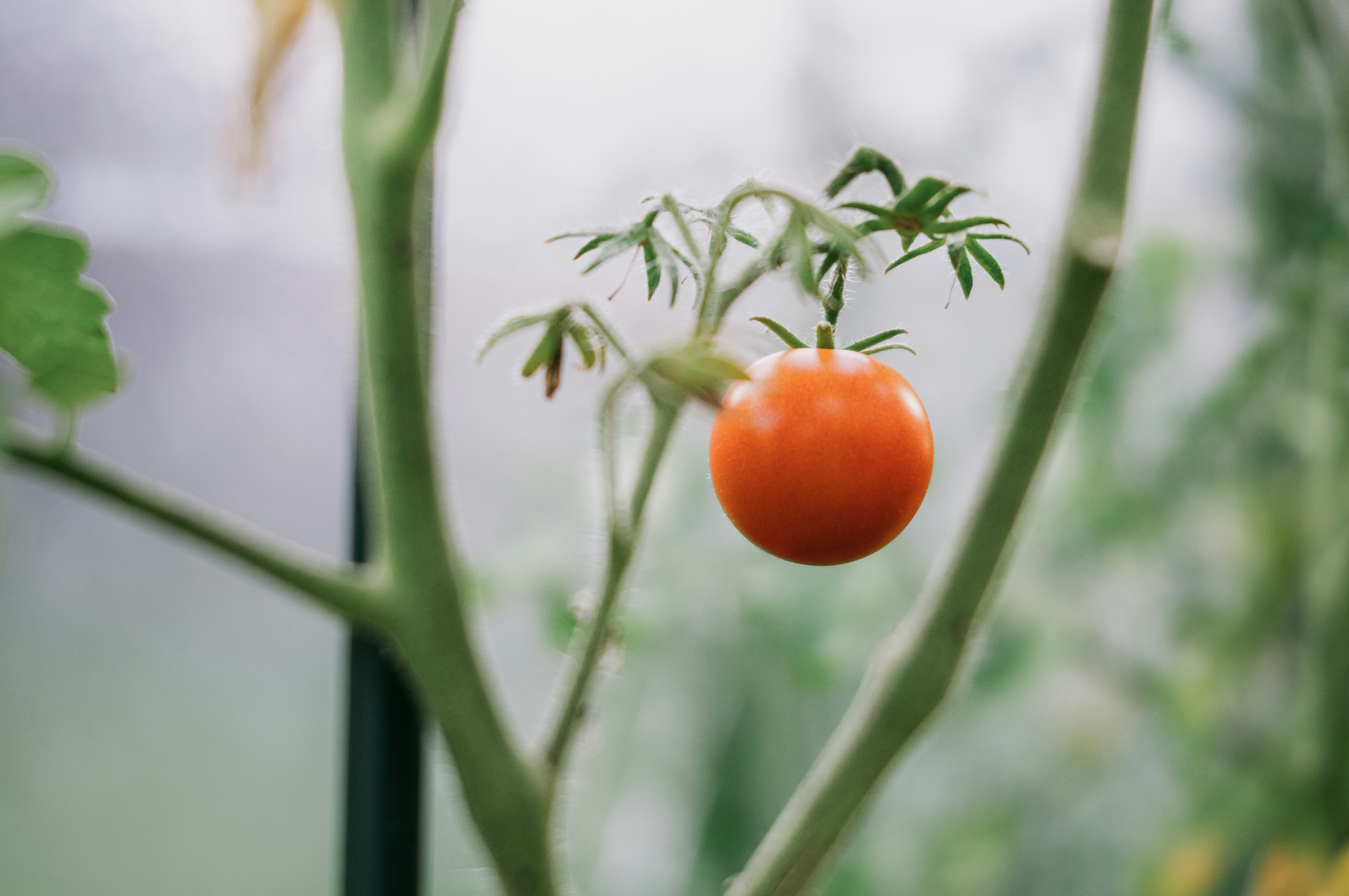
If you’ve been dreaming of cultivating your own juicy and flavorful tomatoes, then look no further! In this ultimate guide to growing greenhouse tomatoes, we’ll explore the varieties that thrive under controlled conditions, allowing you to enjoy their deliciousness all year round. Whether you’re a seasoned gardener or just starting out, we’ll provide you with valuable insights and tips to ensure a bountiful harvest of the tastiest greenhouse tomatoes. So grab your gardening gloves and get ready to embark on a delightful journey of growing these scrumptious fruits right from the comfort of your own greenhouse.
Choosing the Best Greenhouse Tomatoes
When it comes to growing tomatoes in a greenhouse, choosing the right varieties is crucial for success. There are countless tomato varieties out there, but not all of them are well-suited for greenhouse cultivation. Determining the ideal varieties for your greenhouse involves considering factors such as taste, yield, disease resistance, and growth habit.
Determining the Ideal Varieties
When selecting greenhouse tomato varieties, it’s important to consider your preferences and goals. Do you want tomatoes for fresh eating or preserving? Are you looking for large slicing tomatoes or cherry-sized ones for snacking? Determining the ideal tomato variety involves considering its flavor, size, color, and texture.
Some popular greenhouse tomato varieties include ‘Beefsteak,’ ‘Celebrity,’ ‘Early Girl,’ and ‘Cherry Bomb.’ These varieties are known for their excellent taste, high yield, and disease resistance. However, there are countless other varieties to choose from, each with its own unique attributes and characteristics. It’s a good idea to consult with local garden centers or experienced greenhouse growers in your area to find the best varieties that thrive in your specific climate and region.
Considerations for Climate and Region
Different tomato varieties have different climate preferences, so it’s important to consider your specific region and its climate when choosing greenhouse tomatoes. Some tomato varieties thrive in hot climates with long summers, while others perform better in cooler regions with shorter growing seasons.
If you live in a cold climate, you may want to consider growing determinate tomato varieties that mature quickly and produce fruit in a shorter period. On the other hand, if you have a mild climate, you can experiment with indeterminate varieties that have longer growing seasons and can produce tomatoes over an extended period.
Hybrid vs. Heirloom Tomatoes
When choosing greenhouse tomato varieties, you’ll also come across the terms “hybrid” and “heirloom.” Both hybrid and heirloom tomatoes have their advantages and disadvantages.
Hybrid tomatoes are the result of crossbreeding different tomato varieties to create plants with specific characteristics, such as disease resistance or higher yields. They are known for their consistent performance and vigor. Hybrid tomatoes are often more resistant to common tomato diseases, making them a good choice for greenhouse cultivation.
Heirloom tomatoes, on the other hand, are open-pollinated varieties that have been handed down through generations. They are known for their unique flavors, colors, and shapes. Heirloom tomatoes often require more consistent care and attention compared to hybrids, but many gardeners find their taste and variety selection worth the extra effort.
Ultimately, the choice between hybrid and heirloom tomatoes comes down to personal preference and what you value most in your greenhouse tomato harvest.
Preparing the Greenhouse Environment
Creating the perfect environment for your greenhouse tomatoes is essential for their growth and productivity. Choosing the right location, installing proper ventilation, and providing adequate lighting are key considerations for a successful greenhouse tomato cultivation.
Choosing the Right Location
Selecting the right location for your greenhouse is crucial for the optimal growth of your tomatoes. Ideally, the greenhouse should be situated in an area that receives full sun exposure for most of the day. Sunlight is vital for photosynthesis and the development of flavorful tomatoes.
Additionally, consider the orientation of your greenhouse. If possible, align it in an east-west direction to maximize sun exposure and minimize shading. Avoid placing the greenhouse near tall trees or buildings that may cast shadows and reduce sunlight penetration.
Installing Proper Ventilation
Proper ventilation is essential for controlling temperature, humidity, and preventing the buildup of pathogens in the greenhouse. Without adequate airflow, excessive heat and high humidity can promote the growth of fungal diseases and adversely affect tomato productivity.
Consider installing vents or fans in your greenhouse to facilitate air circulation. This will help maintain a favorable growing environment, preventing excessive heat buildup during the day and reducing humidity levels at night. Automatic vent openers or exhaust fans can be utilized to ensure proper ventilation even when you’re not around to manually adjust the vents.
Providing Adequate Lighting
While tomatoes require sunlight for optimal growth, supplemental lighting can be beneficial, especially during the winter months when daylight hours are shorter. LED grow lights are a popular choice for greenhouse tomato growers, as they provide the full spectrum of light that plants need for photosynthesis.
Position the grow lights so that they evenly distribute light across the canopy of your tomato plants. Monitor the recommended light intensity and duration for each growth stage of your tomatoes to avoid overexposure or insufficient lighting.
This image is property of images.unsplash.com.
Soil Preparation and Planting
Creating a healthy and nutrient-rich growing medium is crucial for greenhouse tomatoes. Selecting high-quality soil, preparing it properly, and planting tomato seeds or transplants at the right time are key steps in ensuring a successful tomato harvest.
Selecting High-Quality Soil
Start by selecting a high-quality soil mix that is specifically formulated for container or greenhouse gardening. Look for potting mixes that are well-draining, moisture-retentive, and nutrient-rich. Avoid using garden soil in your greenhouse, as it can contain disease pathogens and may not have the ideal texture for optimal root growth.
Consider adding organic matter, such as compost or well-rotted manure, to enrich the soil and improve its fertility. This will provide your tomato plants with a steady supply of nutrients throughout their growing season.
Preparing the Soil for Planting
Before planting your tomato seeds or transplants, it’s important to prepare the soil properly. Begin by removing any weeds or debris from the greenhouse bed or containers. Loosen the soil using a garden fork or tiller to improve its texture and aeration.
If the soil pH is too acidic or alkaline, consider adjusting it to the optimal range for tomato growth, which is typically between 6.0 and 7.0. Test the soil pH using a soil testing kit, and if necessary, amend the soil with lime to raise the pH or sulfur to lower it.
Planting Tomato Seeds or Young Transplants
For greenhouse cultivation, starting tomatoes from transplants is generally recommended. Tomato seeds can be sown indoors 6-8 weeks before the last frost date in your area. Choose a reputable seed supplier and select varieties that are well-suited for greenhouse cultivation.
Sow the tomato seeds in seed-starting trays or individual containers filled with a lightly moistened seed starting mix. Keep the trays or containers in a warm area or under grow lights to encourage germination. Once the seedlings have developed a few sets of true leaves, transplant them into larger containers or directly into the greenhouse beds.
If you prefer to start with young transplants, look for healthy plants with a well-developed root system. Carefully transplant them into the prepared soil, ensuring that the root ball is planted at the same depth it was in the original container.
Optimizing Watering and Nutrition
Proper watering and providing the right nutrients are crucial for the growth and productivity of greenhouse tomatoes. Understanding tomato watering needs, choosing the right fertilizers and amendments, and implementing a feeding schedule are key aspects of optimizing water and nutrition management.
Understanding Tomato Watering Needs
Tomatoes have specific watering requirements that must be met to ensure their health and productivity. As a general rule, greenhouse tomatoes need consistent moisture to promote even growth and prevent problems such as cracking and blossom end rot.
Monitor the soil moisture levels using a moisture meter or by feeling the top inch of the soil with your finger. Water the tomatoes deeply and thoroughly whenever the soil feels slightly dry. Avoid overwatering, as it can lead to root rot and other fungal diseases. Additionally, aim to water the plants in the morning to allow foliage to dry off before evening, reducing the chances of diseases.
Choosing the Right Fertilizers and Amendments
Providing the right nutrients is crucial for healthy tomato growth and high fruit yield. Before planting, incorporate a slow-release organic fertilizer into the soil to provide a steady supply of nutrients throughout the growing season. Additionally, consider adding compost or well-aged manure to enrich the soil and improve its fertility.
During the growing season, supplement the soil fertility with balanced liquid or granular fertilizers formulated specifically for tomatoes. These fertilizers typically contain a mix of essential nutrients, including nitrogen, phosphorous, and potassium, as well as micronutrients such as calcium and magnesium.
Feeding Schedule and Nutrient Management
Establishing a feeding schedule is important for greenhouse tomatoes to ensure they receive the nutrients they need at each stage of growth. During the early vegetative stage, when the plants are focused on developing foliage, nitrogen-rich fertilizers can be applied.
Once the plants start flowering and setting fruit, switch to a fertilizer with a higher phosphorous content to promote fruit development and overall plant health. Follow the instructions on the fertilizer package for the recommended application rates and frequencies.
It’s also important to monitor nutrient levels in the soil and adjust fertilization accordingly. Regularly test the soil fertility using a soil testing kit to ensure optimal nutrient balance. Adjust the fertilization program based on the test results to avoid nutrient deficiencies or excesses that can adversely affect tomato growth and productivity.
This image is property of images.unsplash.com.
Managing Temperature and Humidity
Maintaining optimal greenhouse temperatures and controlling humidity levels are crucial for greenhouse tomato cultivation. Tomatoes thrive in specific temperature ranges, and excessive humidity can lead to fungal diseases and reduce fruit quality. Understanding temperature management techniques, controlling humidity, and dealing with extreme weather conditions are key to successful greenhouse tomato production.
Maintaining Optimal Greenhouse Temperatures
Tomatoes are warm-season crops that thrive in temperatures between 70°F and 80°F (21°C and 27°C) during the day, with slightly lower temperatures at night. It’s important to maintain these temperature ranges in your greenhouse for optimal tomato growth and fruit production.
Consider using a greenhouse thermometer to monitor the temperature inside your greenhouse regularly. Adjust the greenhouse vents or fans to regulate the temperature and provide adequate airflow. In colder climates or during winter months, additional heating may be required to maintain optimal temperatures for tomato growth.
Controlling Humidity Levels
Excessive humidity in the greenhouse can promote the growth of fungal diseases such as powdery mildew and gray mold. To control humidity levels, ensure proper ventilation and airflow within the greenhouse. Vents and fans help remove stale air, allowing fresh air to circulate and reducing humidity levels.
If humidity remains high despite proper ventilation, consider using dehumidifiers or fans specifically designed for humidity control. These devices can help remove excess moisture from the air, reducing the chances of fungal diseases and improving overall plant health.
Dealing with Extreme Weather Conditions
Extreme weather conditions, such as heatwaves or cold snaps, can have a significant impact on greenhouse tomato plants. During periods of excessively high temperatures, provide shade using shade cloth or apply a light misting of water to cool down the plants. In extreme cold, provide additional insulation using row covers or blankets to protect the plants from frost damage.
Regularly monitor weather forecasts and take necessary precautions to protect your greenhouse tomatoes from extreme weather conditions. Dedicate some time to provide extra care during such periods to ensure the health and productivity of your tomato plants.
Pruning and Training Techniques
Pruning and training greenhouse tomatoes are essential techniques for promoting plant health, maximizing yields, and optimizing light penetration within the canopy. Understanding the importance of pruning, determining the best pruning method for your greenhouse tomatoes, and training the plants for maximum yield will greatly benefit your harvest.
Understanding the Importance of Pruning
Pruning is the process of selectively removing certain parts of the tomato plant to promote better air circulation, reduce disease risks, and direct energy towards fruit production. Pruning also helps maintain a compact plant size, making it easier to manage within the confined space of a greenhouse.
By removing the lower leaves and suckers (the leafy growth that emerges in the leaf axils), you can reduce the chances of soil-borne diseases splashing onto the foliage and improve light penetration, which is crucial for fruit development. Pruning also helps in maintaining the shape of the plant and preventing overcrowding within the greenhouse.
Determining the Best Pruning Method
There are two common pruning methods for greenhouse tomatoes: determinate and indeterminate pruning.
For determinate varieties, which have a predetermined growth habit and produce fruit within a specific time frame, minimal pruning is usually required. These varieties often have a bushy growth habit and don’t require removal of many suckers or excessive leaf pruning.
In contrast, indeterminate varieties continue to grow and produce fruit throughout the growing season. Indeterminate tomatoes benefit from regular pruning to maintain a manageable size and optimize fruit production. This involves removing suckers and limiting the number of main stems to ensure proper airflow and light penetration.
Determinate or indeterminate, it’s crucial to sterilize pruning tools between plants to prevent the spread of diseases. Promptly remove any diseased or damaged plant parts to prevent the spread of pathogens.
Training Tomatoes for Maximum Yield
Training greenhouse tomatoes involves providing support structures to guide the growth of the plants. This helps optimize light penetration, prevents the plants from collapsing under the weight of the fruits, and makes for easier maintenance and harvesting.
Common training systems for greenhouse tomatoes include trellising or vertical string training. These methods involve tying the main stem and selected branches to trellis wires or strings, allowing the plants to grow vertically. As the plants grow, regularly tie them to the trellis or strings to provide support.
Training greenhouse tomatoes also facilitates better air circulation within the canopy, reducing the chances of fungal diseases and promoting more uniform fruit ripening. Additionally, it allows easier access for pruning, pest control, and harvesting.
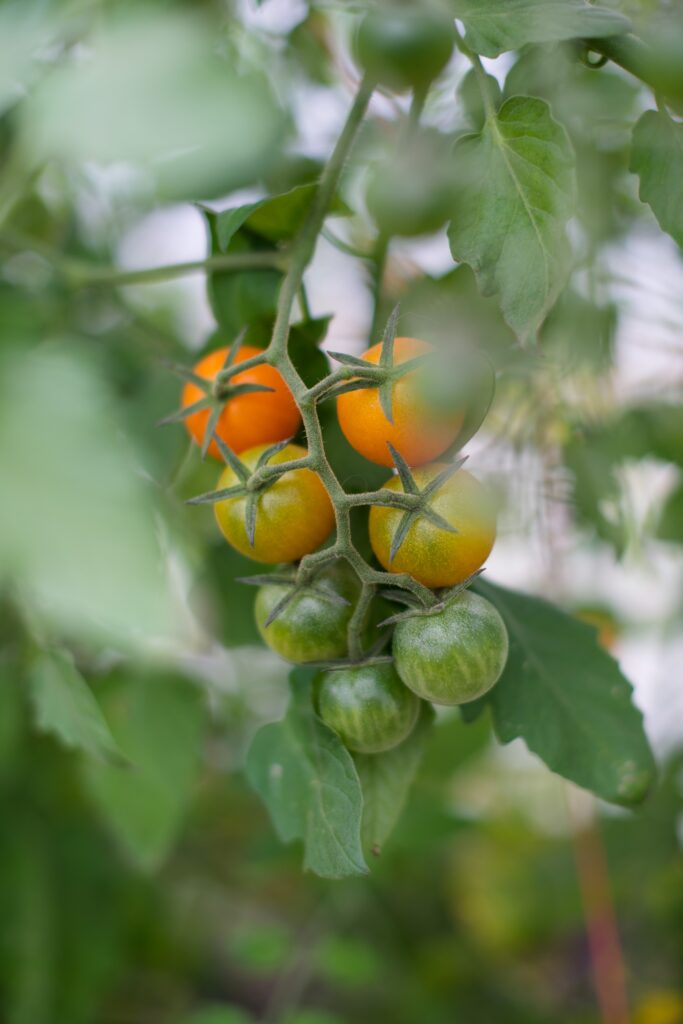
This image is property of images.unsplash.com.
Pest and Disease Prevention
Just like outdoor garden tomatoes, greenhouse tomatoes are also susceptible to various pests and diseases. Identifying common tomato pests, implementing integrated pest management strategies, and preventing or treating tomato diseases are crucial aspects of protecting your greenhouse tomato plants.
Identifying Common Tomato Pests
Some common pests that can affect greenhouse tomatoes include aphids, whiteflies, thrips, spider mites, and tomato hornworms. These pests can cause damage to the foliage, flowers, and fruit, leading to reduced yields and plant health.
Regularly inspect your tomato plants for signs of pest infestation, such as chewed leaves, discoloration, or the presence of insects. Early detection is key to preventing pests from establishing a strong population.
Implementing Integrated Pest Management Strategies
Integrated pest management (IPM) is an effective approach to managing pests while minimizing the use of chemical pesticides. IPM focuses on prevention, monitoring, and the use of cultural, biological, and chemical controls when necessary.
Implementing IPM practices in your greenhouse involves various strategies, such as crop rotation, physical barriers, beneficial insects, and organic insecticides. Crop rotation helps prevent the buildup of pest populations by planting different crops in successive years. Using physical barriers, such as insect netting or row covers, can exclude pests from accessing your tomato plants.
Introduce beneficial insects, such as ladybugs or predatory mites, to control common pests. These beneficial insects feed on pests, reducing their population naturally. When necessary, utilize organic insecticides, following the manufacturer’s instructions and applying them judiciously.
Preventing and Treating Tomato Diseases
Tomatoes are susceptible to various fungal, bacterial, and viral diseases that can significantly impact plant health and fruit quality. Common tomato diseases include early blight, powdery mildew, bacterial spot, and tomato mosaic virus.
To prevent diseases, start with disease-resistant varieties and ensure good airflow and ventilation within the greenhouse. Proper watering practices, such as watering at the base of the plants and avoiding wetting the foliage, can also help reduce disease risks.
If disease symptoms appear, take prompt action to prevent further spread. Remove and destroy infected plant parts, and consider applying organic fungicides or bactericides as recommended. Additionally, thoroughly clean and disinfect greenhouse surfaces and tools to minimize the chances of disease pathogens persisting.
Pollination and Fruit Set
Proper pollination is essential for fruit set in tomatoes. Understanding tomato flower structure, promoting natural pollination, and utilizing hand pollination techniques can help ensure a bountiful tomato harvest in the greenhouse.
Understanding Tomato Flower Structure
Tomato flowers contain both male and female reproductive parts. The male part of the flower, called the stamen, produces the pollen, which needs to come into contact with the female part, called the stigma, for pollination to occur.
During pollination, pollen is transferred from the anthers (part of the stamen) to the stigma. The pollen travels down the stigma to the ovary, where fertilization takes place, leading to fruit development.
Promoting Natural Pollination
In a greenhouse, natural pollination can be limited due to the absence of wind and insects. To promote natural pollination, gently shake the tomato plants or tap the flower clusters to release the pollen. This will help facilitate the transfer of pollen between the stamen and stigma.
Encouraging the presence of beneficial insects, such as bumblebees, within the greenhouse can also help with pollination. Bumblebees are proficient pollinators and can significantly improve fruit set in tomatoes.
Hand Pollination Techniques
If natural pollination is not sufficient, or if you want to ensure a higher fruit set, hand pollination can be beneficial. Hand pollination involves manually transferring pollen from the anthers to the stigmas using a small brush or cotton swab.
To hand pollinate, gently brush the anthers to collect the pollen, and transfer it to the stigma of another flower. Repeat this process for several flowers within each cluster, ensuring thorough pollination.
Hand pollination can be especially useful when environmental conditions are not conducive to natural pollination, such as low humidity, excessive heat, or a lack of insect activity. Regularly monitor flower clusters, identify those that may not have been pollinated, and perform hand pollination as necessary to ensure optimal fruit set.
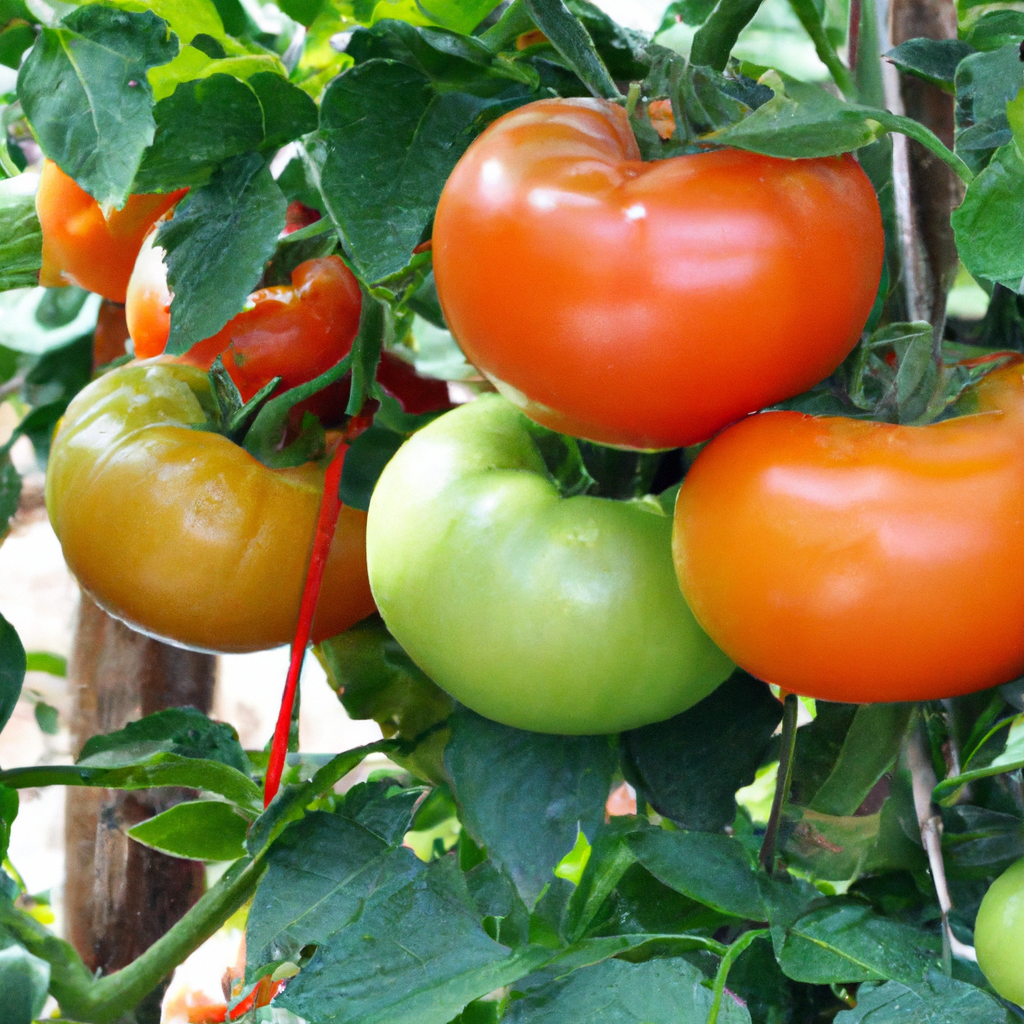
Harvesting and Ripening
Knowing when to harvest greenhouse tomatoes and using proper harvesting techniques are vital to ensure the best flavor, texture, and quality. Additionally, understanding how to ripen tomatoes off the vine can extend your harvest and allow you to enjoy freshly picked tomatoes later in the season.
Knowing When to Harvest Greenhouse Tomatoes
The optimal time to harvest greenhouse tomatoes depends on the variety and personal preference. Generally, tomatoes are ready to harvest when they have reached full color and are firm but slightly yielding to gentle pressure.
Refer to the specific variety’s days to maturity to estimate when the tomatoes will be ready for harvest. Regularly monitor the fruits as they begin to develop color, and gently feel them to assess their readiness.
Proper Harvesting Techniques
To harvest greenhouse tomatoes, gently twist or cut the fruit from the plant using sharp garden pruners or scissors. Avoid pulling or tugging on the fruit, as it may damage the plant or lead to delayed maturity of the remaining fruits.
Handle the harvested tomatoes with care to prevent bruising or damage. Place them in a shallow basket or container, arranged in a single layer to avoid crushing the fruits. Avoid storing overripe or damaged tomatoes alongside healthy ones to prevent further spoilage.
Ripening Tomatoes Off the Vine
Sometimes, it may be necessary to ripen greenhouse tomatoes off the vine, especially if they are harvested slightly underripe to prevent overripening on the plant. To ripen tomatoes off the vine, place them in a well-ventilated area at room temperature.
You can accelerate the ripening process by placing the tomatoes in a paper bag with a ripe banana or apple. The ethylene gas produced by the ripe fruit will hasten the ripening of the tomatoes. Check the tomatoes regularly and consume them as they ripen to enjoy their peak flavor and texture.
Common Greenhouse Tomato Problems
While greenhouse tomato cultivation offers many advantages, it is not without its challenges. Some common problems that greenhouse tomato growers may encounter include blossom end rot, fruit cracking, and leaf curling. Understanding these issues and taking appropriate preventive measures can help minimize their occurrence.
Blossom End Rot
Blossom end rot is a common problem in tomatoes that is characterized by a dark, sunken lesion on the bottom end of the fruit. It is caused by a calcium deficiency in the developing fruits and is often exacerbated by inconsistent watering or fluctuations in soil moisture levels.
To prevent blossom end rot, maintain consistent soil moisture levels by watering evenly and avoiding over- or underwatering. Ensure that the soil pH is within the optimal range for tomato growth and consider adding calcium amendments, such as gypsum or crushed eggshells, to the soil before planting.
Fruit Cracking
Fruit cracking is a problem that occurs when tomatoes experience rapid growth or undergo fluctuations in water availability. It often manifests as radial or concentric cracks on the fruit surface, which can lead to spoilage and reduced fruit quality.
To reduce the occurrence of fruit cracking, provide consistent watering and ensure a steady supply of moisture to the plants. Aim to maintain even soil moisture levels by watering deeply and regularly. Consider mulching around the tomato plants to help regulate soil moisture and reduce evaporation.
Leaf Curling
Leaf curling in tomatoes can be caused by various factors, including temperature stress, excessive humidity, nutrient deficiencies, or viral infections. It is often a symptom of an underlying problem rather than a specific issue itself.
To address leaf curling, maintain optimal greenhouse temperatures and humidity levels. Ensure proper ventilation and airflow within the greenhouse to reduce excessive humidity. Monitor nutrient levels in the soil and provide appropriate fertilization to prevent nutrient deficiencies. If leaf curling persists despite these measures, consider consulting with a local horticulture expert to identify any possible viral infections or other causes.
By addressing and mitigating these common tomato problems, you can ensure healthy plant growth, maximize fruit production, and enjoy a bountiful harvest of delicious greenhouse tomatoes.
In conclusion, growing greenhouse tomatoes is an enjoyable and rewarding endeavor. By choosing the right varieties, preparing the greenhouse environment, properly managing watering and nutrition, controlling temperature and humidity, employing pruning and training techniques, preventing pests and diseases, promoting pollination, and practicing proper harvesting and ripening techniques, you can optimize your greenhouse tomato production and enjoy a plentiful supply of fresh, flavorful tomatoes throughout the year. Happy gardening!
